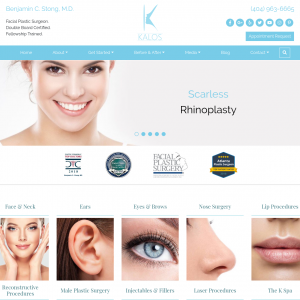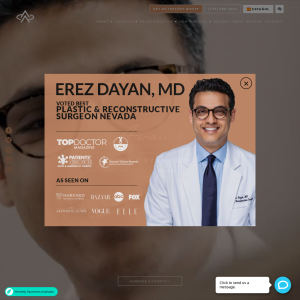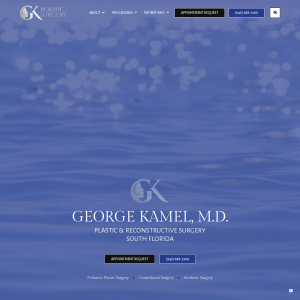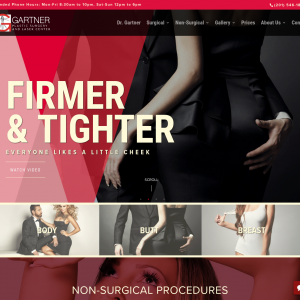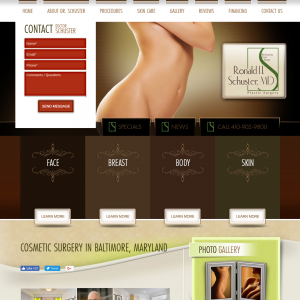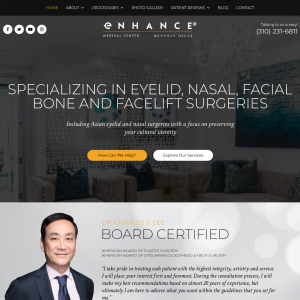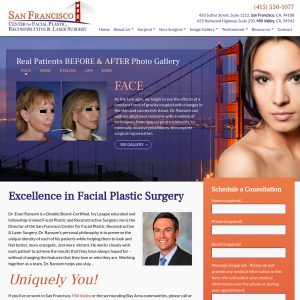This content has been reviewed for accuracy by Benjamin C. Stong, Kalos Facial Plastic Surgery LLC.
Rhinoplasty
Rhinoplasty or, the “nose job,” is one of the most requested facial plastic surgeries for both men and women. The nose is a significant feature that impacts the balance and harmony of the face. Rhinoplasty can alter the size or shape of the nose, creating a more attractive appearance for the patient and improve self-confidence.
Few features play as crucial a role in facial harmony than the nose. A “perfect” nose is one that blends and harmonizes with the rest of the facial features, without drawing attention away from the eyes or mouth. If a nose is misshapen or oversized, it overshadows these other features. Rhinoplasty offers a surgical solution to reshape the nose to match the overall aesthetics of the face.
Candidates for Rhinoplasty
Anyone in good health who feels self-conscious of their nose shape or size may be a good candidate for rhinoplasty. This can include adults of all ages and some teenagers who desire a different appearance for their nose. It is important that the nose is fully developed before surgical alterations are made. Teenagers can undergo rhinoplasty when their nose has finished growing, usually around 15 to 17 years of age. Some nose issues that can be resolved with rhinoplasty include:
- Congenital nose deformities
- Misshaped, broken or fractured noses
- Large humps
- Crooked bridge
- Bulbous tip
- Wide or flared nostrils
- Upturned or drooping nasal tip
- Flat nasal bridges
Reshaping the nose can involve removing or adding cartilage, depending on the procedure. When performed by a highly experienced facial plastic surgeon, incisions can be discreetly hidden, and the results can appear natural.
Open or Closed Rhinoplasty
There are various techniques that are used to perform rhinoplasty procedures. Both open and closed surgical procedures can be used when reshaping or resizing the nose. With closed rhinoplasty, the incisions are placed inside of the nose, offering discretion in hiding evidence of surgery. This is often referred to as “scarless rhinoplasty,” as you cannot see the incisions. However, closed rhinoplasty offers less precision for reshaping the nasal tip but can be effectively used for nasal bridge work such as removing a nasal hump.
Open structure rhinoplasty is the preferred method for intricate shaping of the nasal tip and interior structures of the nose. This procedure does require an external incision, but it can be disguised and hidden once it heals. The incision is usually placed at the columella, the small divider between the nostrils at the base of the nose. Open rhinoplasty offers better access and visualization of the nose structure for precise reshaping of the cartilage and tissue. Once the nose heals, the incision is almost impossible to see if the procedure is performed by an experienced facial plastic surgeon.
Improved Nasal Form and Function
Rhinoplasty can be combined with septoplasty to improve the function of the nose and reform the septum cartilage. In most open rhinoplasty procedures, the interior of the nose is exposed and can be restructured for better breathing. If there is a deviated septum or other nasal passageway issues, these can be resolved during rhinoplasty. Septoplasty is commonly performed with any nasal bridge work, ensuring the new nose form is aesthetically-pleasing as well as functional.
Rhinoplasty can have a dramatic impact on the overall facial aesthetics and confidence of the patient. Anyone considering this procedure should choose a facial plastic surgeon who has extensive training and experience in this procedure to ensure the best results. Candidates for this procedure should take the time to review credentials and previous rhinoplasty procedures to find a qualified facial plastic surgeon they can trust.
